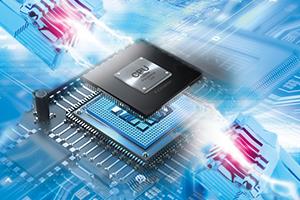It’s hard to imagine that 10 years ago there wasn’t such a thing as an iPhone. In just under a decade, the speed at which technology has transformed mobile phones into sophisticated and futuristic supercomputers has been nothing short of phenomenal. Take an iPhone 7 apart today and the amount of electronic technology that’s packed into one device is staggering (next generation PCBs, IPCs, LCDs, GPUs, sensors etc.) and trends show consumer electronics are just going to get even more complex.
Every hi-tech market from robotics and machine design to industrial and consumer products is applying new technologies to innovate and create smarter, connected products. But this can only be possible with an increasingly synchronised design environment.

NT CADCAM is the first certified SOLIDWORKS reseller to provide greater ECAD/MCAD collaboration with SOLIDWORKS PCB powered by Altium (formerly PCBWorks), a new CAD software that enables mechanical and electrical engineers to share compatible design data right from the start.
“Historically, product design has always begun with a trade off between mechanical versus electrical,” says NT CADCAM electrical specialist Simon Knibbs. “The ECAD team would want as much space as they can get, while the MCAD team would want to slim down things as much as possible for aesthetic reasons.
“The problem with this approach is that it is only when the electrical and mechanical teams come together at the end and see what they’ve got, that they discover all sorts of engineering errors that could slow the whole design process down. With little time (or budget) to make all the Engineering Change Orders (ECOs) required, often the design can be compromised.”

Now, SOLIDWORKS PCB powered by Altium (formerly PCBWorks), can unite the two worlds of Electrical and Mechanical so you can have both teams working together, collaborating and integrating designs in perfect harmony. By linking all your CAD mechanical models to electrical CAD data, designs can be managed as a single project with all your data kept in sync.
Key benefits:
- Ensures that design data is as accurate as possible by using SOLIDWORKS native Parasolid file format directly in SOLIDWORKS PCB - by using native loss-less files instead of error-prone translations.
- Parasolid provides the most accurate representation of your design intent and keeps your mechanical and electrical data in sync.
- Avoids tedious importing/exporting of STEP models between ECAD and MCAD systems
- Actively make changes to component placement, board shape, and mounting holes on your PCB directly in your SOLIDWORKS environment, syncing data with SOLIDWORKS PCB easily with managed ECOs.
- Avoid missed time to market
- Avoid design revisions and prototype costs skyrocketing from failed communication processes
- Multiple revisions can be solved first time with a properly implemented collaboration system
- Moderately complex PCB prototypes are costly - avoid numerous prototypes that fail to fit the mechanical enclosure
- Gain an even greater degree of control over your PCB design process with access to copper traces from board designs
To find out more about SOLIDWORKS PCB, contact SOLIDWORKS reseller NT CADCAM on 0808 250 6377.













